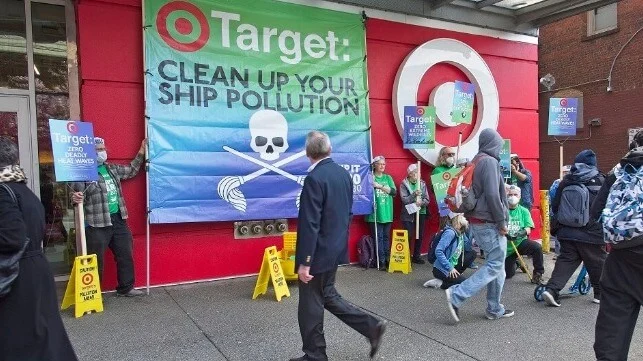 Meh Ship means Target has charted a cleaner course but needs to go further.
Meh Ship means Target has charted a cleaner course but needs to go further.

As the second largest retail polluter via fossil-fueled ships, Target must reach farther and decarbonize by 2030.

Target's Climbing Climate Emissions
As the second-most polluting retail company on our oceans, Target’s use of fossil-fueled ships produced 543K metric tons of carbon just from its imports into the U.S.
— Kendra Ulrich, Shipping Campaigns Director for Stand.earth.
Target's Pledge to Ship It Zero
Target has joined other major retailers in committing to moving their products off of fossil-fueled ocean cargo ships by 2040. We applaud this as a great first step, but 2040 is too late. Target must reach net-zero carbon ocean shipping by 2030.
Target's Zero-Emission Opportunity
To be a true climate leader, we expect more from Target. We call upon the retailer to stop moving products on fossil-fueled ships by 2030 — 10 years earlier than their 2040 commitment.



